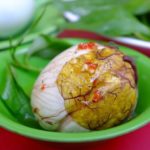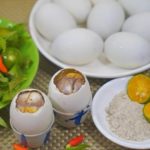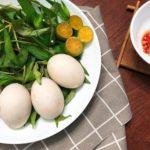Balut is a highly nutritious food popular among those seeking a health boost. This delicacy offers a variety of preparation options, including boiled, tamarind stir-fried, grilled, boiled with mugwort, or hot pot-dipped. The optimal taste and texture of balut are achieved when the duck embryo is around 16-19 days old, ensuring a small duckling, a soft coconut layer, and a generous yolk.
When purchasing balut, it is essential to select young eggs with underdeveloped embryos. Older eggs may have larger ducklings, sometimes with feathers, and a harder coconut layer, which can be unappetizing to some.
To choose the perfect young balut with a small embryo, a soft yolk, and a soft coconut layer, keep these tips in mind:
– Choose eggs with a rough shell
Balut eggs with slightly rough shells tend to be younger. Additionally, look for a thin layer of white powder coating the shell’s surface.
In contrast, older balut eggs have smoother, grayish shells. They often display visible black spots, and upon close inspection under a lamp, you may notice a larger air pocket at the broader end of the egg.
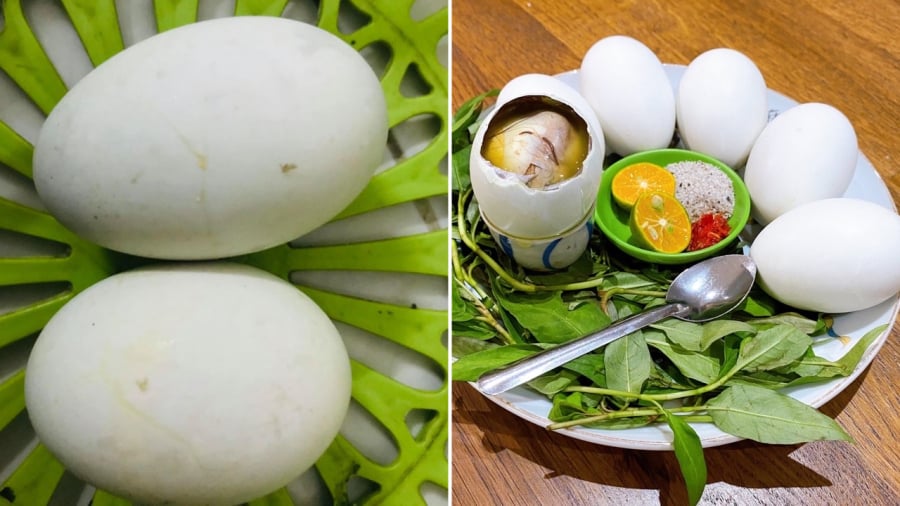
Choose balut eggs with a thin layer of powder on the shell.
– Inspect eggs under light
Examining balut eggs under a light is a straightforward way to determine their age. Place the egg under a lamp and observe the interior. If you notice a small air pocket, it indicates a young egg. Conversely, a larger air pocket suggests an older egg.
– Gently shake the egg
When buying balut, some people gently shake the egg to listen for movement inside. A newer egg with a more solid white and yolk will not produce a sound. On the other hand, an older egg with a more developed embryo will have a larger air pocket, resulting in a noticeable sound when shaken.
– Heft the egg in your hand
Pick up each egg and assess its weight. Heavier, denser eggs indicate younger balut with solid insides, smaller ducklings, and intact yolks and whites. Lighter eggs suggest older eggs with more developed ducklings and less yolk.
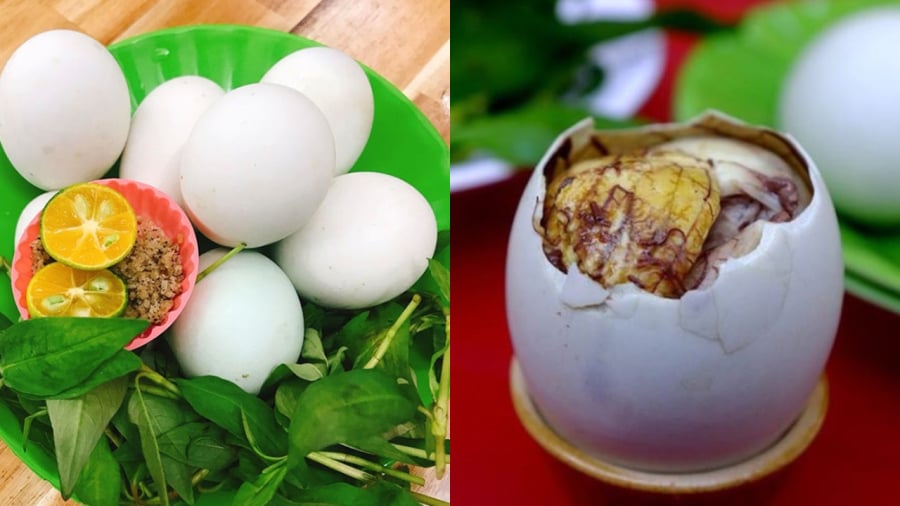
Opt for balut eggs that feel heavy for their size.
– Float them in brine
You can also test the eggs by floating them in a brine solution. Fresh, young eggs will sink to the bottom, while older or spoiled eggs will float.


























